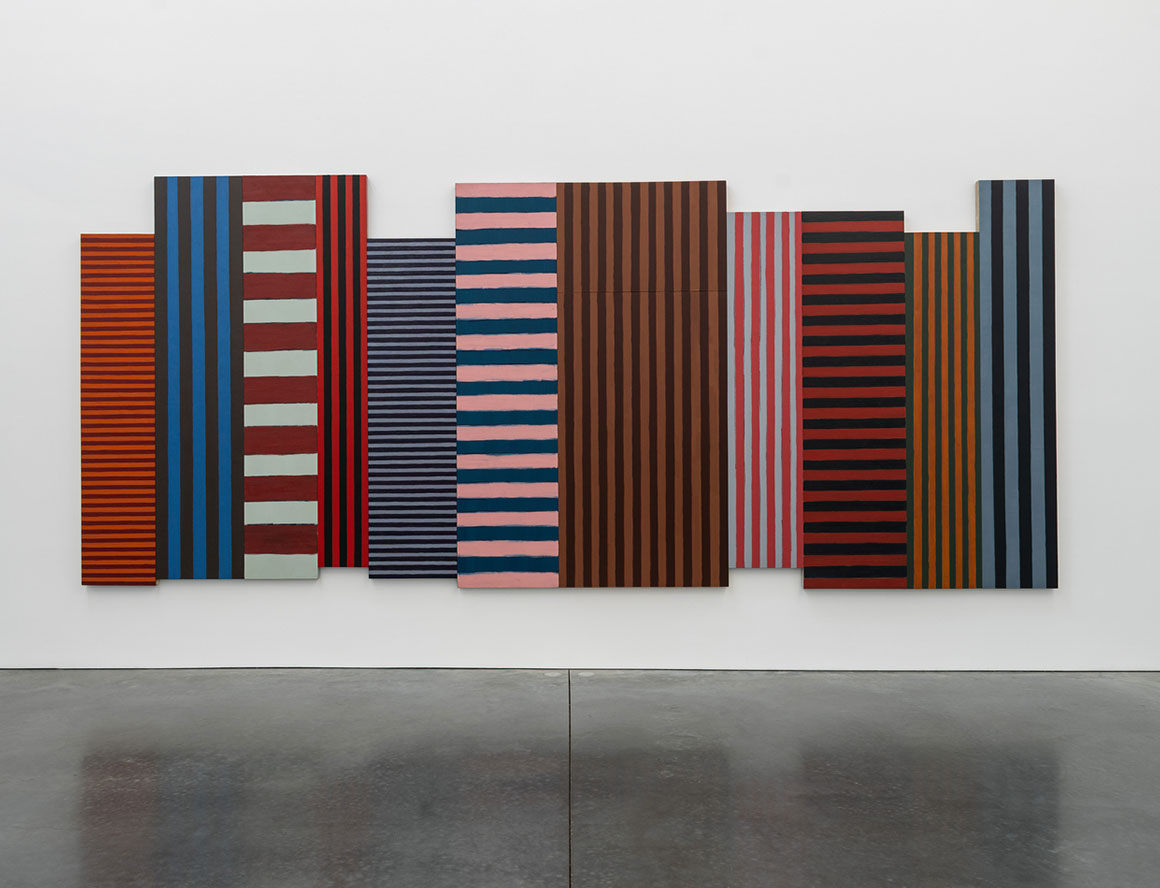‘Sean Scully: The Albee Barn, Montauk’ Review: Abstractions of Light and Landscape – Wall Street Journal
6 August 2025
In the summer of 1982, Sean Scully spent a month at the Edward Albee Foundation’s Barn in Montauk, N.Y. The then 37-year-old artist, born in Dublin and raised in London, had been living in New York since arriving on a Harkness Fellowship in 1975, and was beginning to announce his presence. A confirmed urbanite, used to outdoor space defined by buildings and pavement, Mr. Scully has said in interviews that experiencing Montauk’s open expanse of sea, sky and beach on this first extended sojourn in nature was transformative. During the Albee residency, Mr. Scully produced 22 small, intensely physical paintings on found pieces of wood. Named for islands, they depend on the collisions of differently proportioned, differently colored stripes on discrete shapes—as he has taught us to expect of him—here in miniature.
Now more than a dozen of these intimate little paintings are the starting point of “Sean Scully: The Albee Barn, Montauk” at the Parrish Art Museum, shown together for the first time since that formative residency. Organized by Mónica Ramírez-Montagut, the museum’s director, with Kaitlin Halloran, associate curator, in close collaboration with the artist, more than 70 works trace the continuing importance of light and place on Mr. Scully’s uncompromising, muscular abstractions. There’s a handsome catalog and an informative timeline beginning with the artist’s grim Dickensian childhood.
The earliest exhibited work, the 20-foot-wide, syncopated “Backs and Fronts” (1981), asserts that before his Montauk stay Mr. Scully was already challenging conventions, assembling panels of varied heights and widths, and forcing variously colored stripes to coexist. He had abandoned the crisp, narrow minimalist stripes of his earlier work (the first paintings I saw in his studio more than four decades ago) for nuanced hand-painted bands, at once nonspecific and about the presence of the artist.
“I paint stripes,” Mr. Scully said in an interview with Ms. Ramírez-Montagut, “because I don’t want to paint space. I want to paint rhythm.” In the Montauk Paintings that rhythm, he tells us, was deeply informed by his daily experience of the seaside landscape; their varied whites and off-whites derive from beach light and bleached skeletons in the sand.
Read more of Karen Wilkin's review for The Wall Street Journal here.
